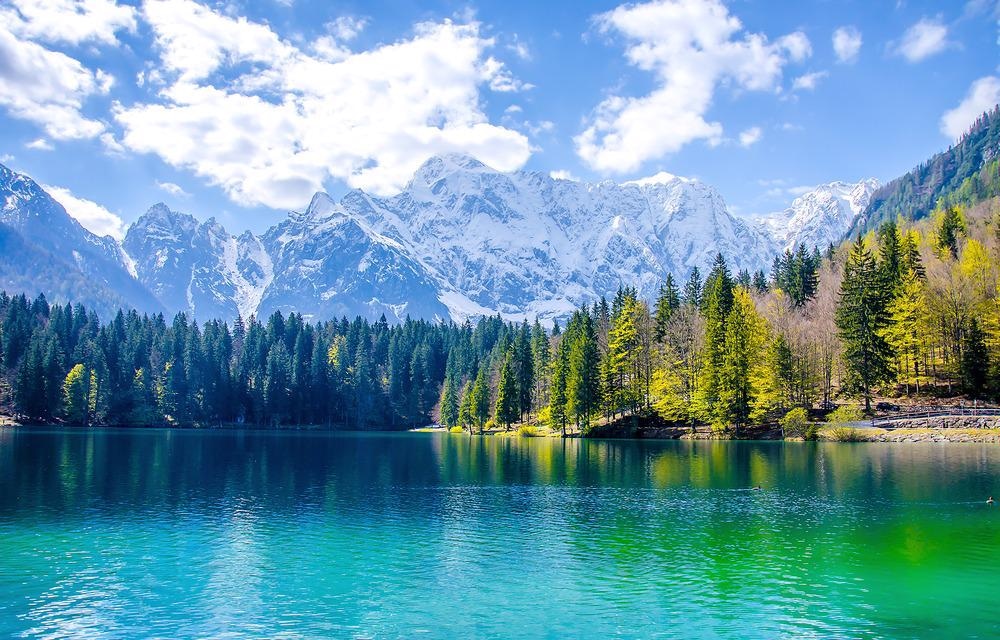New research suggests that a carbon-neutral biofuel could be created from methane extracted from lakes.

Image Credit: VarnaK/Shutterstock.com
The production of renewable energy sources is vital to meeting increasing energy demands whilst simultaneously attempting to limit damage to the environment. This future of sustainability in fuel sources is the key to limiting greenhouse gas emissions and in the battle against climate change.
New research suggests that a new sustainable and environmentally gentle fuel could emerge from an unlikely source. A team of environmental scientists from the University of Basel, Switzerland, suggest that methane stored in lakes could be tapped, converted to methanol, and used as fuel.
“Until now, no studies have addressed the effects of methane removal on lake ecosystem functioning, but no immediate negative effects can be foreseen with our current understanding. With our idea, we wanted to start a broad discussion about the potential, feasibility, and risks of a technology like this.”
Maciej Bartosiewicz, University of Basel
The key to the team’s breakthrough is a microporous membrane constructed from polymeric materials that can sift methane from lake water, even when it exists in low concentrations.
Alongside Professor Moritz Lehmann, head of the biogeochemistry research group at Basel, Maciej Bartosiewicz, a postdoctoral researcher in the Department of Environmental Sciences at the University of Basel, is the author of a paper documenting the team’s research published in the journal Environmental Science & Technology.
As well as providing a sustainable fuel, the extraction of methane could help prevent this greenhouse gas — which has about 25 times the impact of carbon dioxide on warming — from leaking to the atmosphere. Thus, helping fight climate change on two fronts.
Making the Most of Methane
According to the United States Environmental Protection Agency (EPA), methane accounts for about 10% of all greenhouse emissions in the US that originate from human activities. The majority of this contribution comes from oil production, leaks in gas systems, and agricultural sources like the rearing of livestock and the use of fertilizers.
But, human activities and industry are not the only sources of this greenhouse gas in the atmosphere. Methane is also produced naturally, particularly by the decomposition of microbial life in wetlands, lakes, and rivers and the natural processing of carbon dioxide by these lifeforms.
These natural sources account for about 20% of Earth’s total methane emissions and Bartosiewicz says this is enough, theoretically at least, to meet the world’s burgeoning energy needs.
Thus, this methane and the carbon locked up within it could be used as a partial replacement for fossil fuels providing a viable and renewable alternative. This concept has been tested before.
Lake Kivu — one of the African great lakes located between the Democratic Republic of Congo and Rwanda — has been tapped for methane for the past five years. The gas has been extracted from depths of up to 260 meters in the body of water and converted directly to an energy source.
“Methane occurs in high concentrations in large quantities on the lake bed there,” explains Bartosiewicz. “The methane concentration is about 100 times higher than in ordinary lakes.”
Until now it was believed that this process would not be viable in lakes that possess a lower concentration of methane than Lake Kivu. That’s where the Basel team comes in.
Separating Methane from Water Efficiently
The key to extracting low-concentrations of methane gas from water is a hydrophobic gas-liquid membrane contactor (GLMC). Using the GLMC a gas mixture can be derived from lake water and from that mixture scientists and engineers can export methane.
Bartosiewicz points out that Switzerland is the ideal location to test such technology thanks to its large concentration of reservoirs.
“Switzerland is practically made for methane extraction from lakes. We have recently learned that they also produce and emit into the atmosphere large quantities of methane.”
Maciej Bartosiewicz, University of Basel
The next step for the team will be to determine if the plan has any unforeseen potential environmental drawbacks, but the researchers are positive that this will not be the case.
“Removing excess carbon could even help curb excessive phytoplankton bloom formation and reduce natural greenhouse gas emissions from lakes. More work is needed before any practical implementation of this initial theoretical idea,” concludes Bartosiewicz. “This concept could one day make an important contribution to reaching our climate goals.”
Disclaimer: The views expressed here are those of the author expressed in their private capacity and do not necessarily represent the views of AZoM.com Limited T/A AZoNetwork the owner and operator of this website. This disclaimer forms part of the Terms and conditions of use of this website.
Sources:
Bartosiewicz. M., Rzepka. P., Lehmann. M. F., [2021], ‘Tapping Freshwaters for Methane and Energy,’ Environmental Science & Technology, https://doi.org/10.1021/acs.est.0c06210
‘Overview of Greenhouse Gases: Methane,’ EPA, https://www.epa.gov/ghgemissions/overview-greenhouse-gases